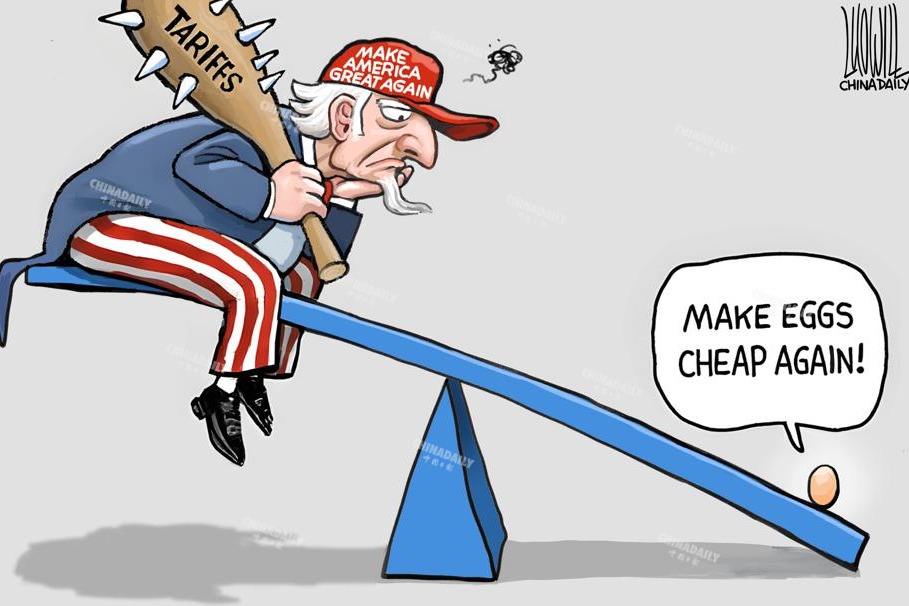Significant headway


The Regional Comprehensive Economic Partnership agreement represents a major breakthrough for China's international economic and trade cooperation
After eight years of unremitting efforts, the Regional Comprehensive Economic Partnership agreement was formally signed on Nov 15. The agreement involves the 10 member countries of the Association of Southeast Asian Nations and five of its major trading partners-Australia, China, Japan, New Zealand and the Republic of Korea. The total population and GDP of the 15 member economies account for 30 percent and 29 percent of the world total respectively. But since China has already signed bilateral free agreements with 17 economies, including with ASEAN, Australia and the ROK, why is the RCEP still so important to it?
First and foremost, the RCEP agreement is a major breakthrough for China's international economic and trade cooperation. The RCEP covers the world's most economically vibrant market, the Asia-Pacific, which is not only the primary area for China's global industrial chain collaborations, but also the most important market for Chinese goods and services. By further lowering the costs of industrial chain collaboration and lowering trade barriers within the trading bloc, the RCEP will contribute to the consolidation and development of China's cross-border industrial and supply chains, boost investor confidence in China's industrial globalization and help sustain and increase the demand for Chinese goods and services from the external market.
Second, the RCEP is the first high-level regional economic and trade cooperation agreement that China has promoted as a major economic and trading power. But as important as it is for China to make its voice and appeal heard in the process of the reshaping of global economic and trade rules, it is equally important for the country to use the RCEP agreement to accelerate domestic reforms. The world is undergoing profound changes, among them the reshaping of global economic and trade rules. While traditional trade rules of the World Trade Organization only focus on removing border barriers on trade (mainly tariffs), new economic and trade cooperation rules have put forward fresh requirements in regard to investment market access, competition and standards, to achieve a higher level of opening-up. China is on the one hand adapting to the impacts of such changes and on the other hand exerting influence on the formulation of these new rules based on its own development conditions and interest demands. Furthermore, the RCEP requires a higher level of opening-up, which is expected to facilitate Chinese domestic reform and opening-up policies, something the country experienced following its accession to the WTO in 2001. With specific short-term and mid-term goals, the mechanism of using opening-up to facilitate domestic reforms will once again come into play in China.
Finally, the signing of the RCEP agreement fully demonstrates that China's national strategy is by no means involuntary, but rather active participation in and promotion of globalization on the basis of consolidating domestic circulation. The successful signing of the RCEP will also push forward bilateral and multilateral high-level economic and trade negotiations that China is carrying out to achieve consensus at an early date.
The high-level opening-up requirements of the RCEP will provide a basis and reference for China to carry out bilateral and multilateral economic and trade negotiations in years to come, helping the country further expand its circle of economic and trade partners and promote economic globalization.
Yet needless to say, the successful implementation of the RCEP is faced with a number of challenges.
To start with, although the agreement was signed, in some countries, it requires approval from parliament or even recognition of a new administration to take effect and be implemented. Such interference from political factors in international economic and trade cooperation is not rare, such as the withdrawal of the United States from the Trans-Pacific Partnership Agreement.
Second, in practice, for a large-scale regional free trade agreement to be of great use in promoting cooperation and development, the currency of a country from the region should be widely used in trade settlement in the region (also known as anchor currency), and the country is usually the major trading partner of other parties of the free trade agreement. That's why the US-dominated North American Free Trade Agreement (predecessor of the new United States-Mexico-Canada Agreement) is widely acknowledged as one of the most successful free trade agreements in the world. China, as one of the major promoters of the RCEP, is at the center of trade in the Asia-Pacific region. However, its currency is yet to become the major trade settlement currency in the region. According to data from the Society for Worldwide Interbank Financial Telecommunication in June 2020, China's renminbi was the fifth most active currency for global payments by value. However, its share stood at a meager 1.76 percent, more or less the same as the Canadian dollar's share in global payments. The status of the renminbi in global payments does not match China's status as the world's largest goods exporter and second-largest goods importer.
Furthermore, the renminbi has a long way to go in terms of globalization, against the backdrop of strict restrictions on cross-border capital flows and limited convertibility. It is anticipated that the globalization of the renminbi and the RCEP will be mutually supporting in the years to come.
Finally, there will be possible disruptions to the RCEP from non-RCEP members. All free trade agreements have trade diversion effects as well as trade creation effects. Therefore, non-RCEP member countries may set up obstacles to the development of the RCEP for their own benefit. During RCEP negotiations, the TPP showed strong competitiveness and substitutability to the RCEP. The next US administration may therefore consider rejoining the Comprehensive and Progressive Agreement for Trans-Pacific Partnership, which evolved from the TPP.
The author is a professor at Huazhong University of Science and Technology and director of the Optical Valley Institute for Free Trade. The author contributed this article to China Watch, a think tank powered by China Daily. The views do not necessarily reflect those of China Daily.


































